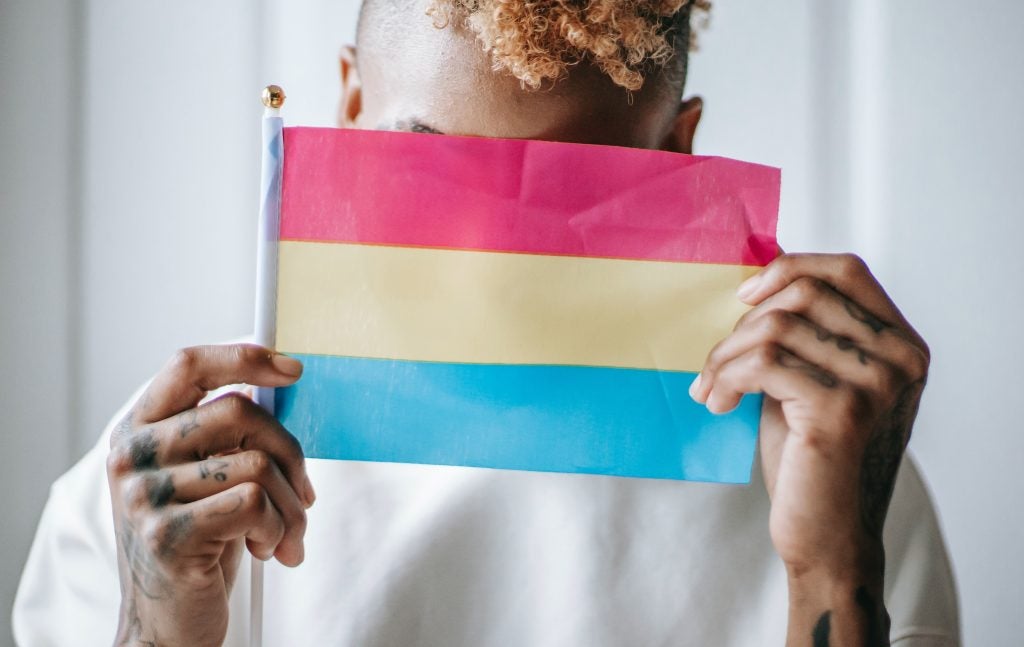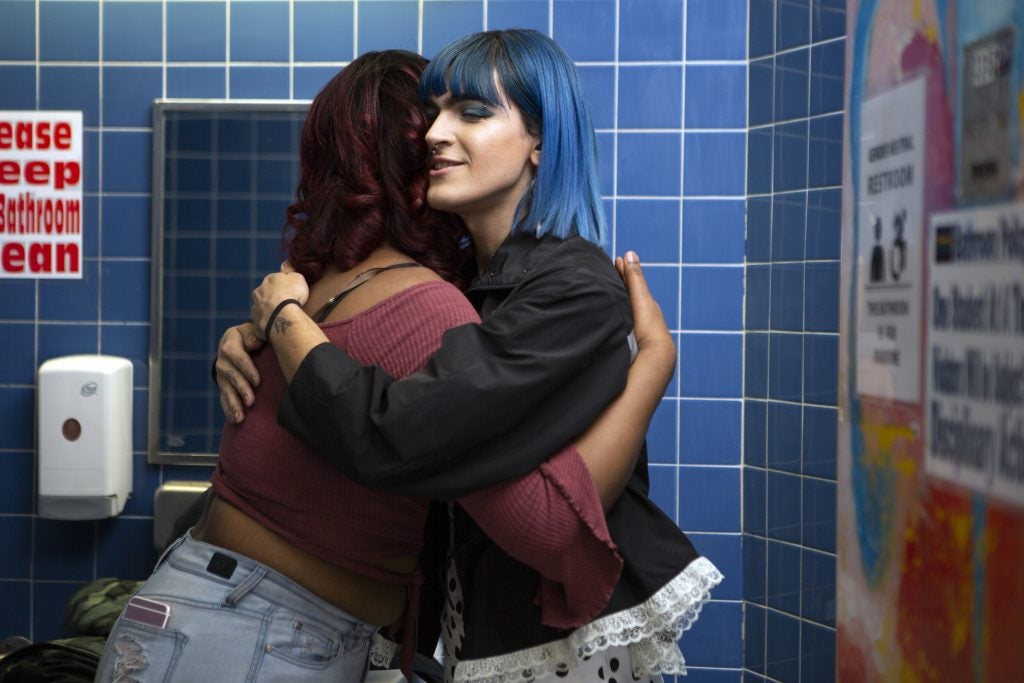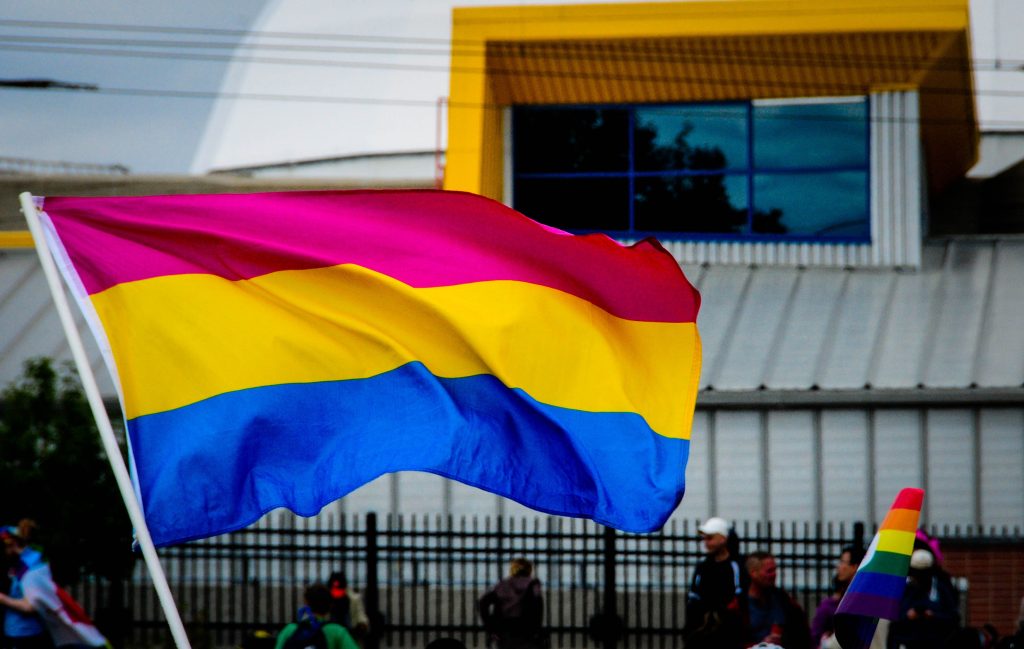
Table of Contents
What is Pansexuality?
Pansexuality is a sexual orientation describing a person who is attracted to all types of people, regardless of their sex or gender.1 The term “pansexuality,” sometimes referred to as omnisexuality, has its roots in the Greek prefix pan-, meaning “all” or “every” coming together as one.2 When combined with the suffix, –sexual, describing one’s own sexual desires or attractions, the word pansexual is defined as “someone who is attracted to all sexes and genders of people.” 2
Pansexual people are capable of carrying out sexual, emotional, and romantic relationships with people of all genders. They could be interested in someone who is male, female, transgender, intersex, or genderqueer/gender fluid.3 It should be noted that pansexual people are not sexually attracted to everyone; they are simply open towards people of all sexes and gender identities as sexual or romantic partners.
Orientation vs. Gender
Pansexuality is one of the many sexual orientations that an individual may identify as. Someone’s sexual orientation is used by an individual to define who they are romantically and/or sexually attracted to. Sexuality is defined on a continuous spectrum of orientations. Examples of different orientations, include straight, gay, lesbian, bisexual, pansexual, and asexual. Gender identity, in contrast, is a person’s perception of their own gender, which may be male, female, transgender, genderqueer, agender, or gender fluid. To learn more about the different types of gender identities, please refer to our article “Overview of Gender Identities.”
Pansexuality May Be Expressed Differently by Different People
Like any other orientation, pansexual people might define their identity in a way that is more personalized to how they view sexual and romantic relationships. Thus, individuals might have slightly different ways of defining their pansexual identity. While a pansexual person might be attracted to someone of any gender category or identity, they may also have preferences for who they are more or less attracted to, either in a physical or emotional sense. As Jazz Jennings, a teenage transgender spokeswoman, stated, “There’s no limits. I’ll date anyone. It’s more that I love someone for their soul. Physically, I think I’m more attracted to boys but sometimes I’m attracted to girls too, so it’s weird.”4 This quote also presents the idea of loving someone for who they are rather than recognizing their gender as a factor regulating whether or not they are attracted to them. Pansexual people who identify with this mentality may be described as “genderblind” in that they do not perceive gender as a relevant factor in who they are attracted to. Other pansexual people have described their identity to be a factor that does not limit their choices in sexual partners or activities.
For some pansexual people, knowledge of someone’s gender might be relevant to foster their attraction to that person. For other pansexual people, they may not need or want to know a potential partner’s gender information as they view it as irrelevant.5 However, the characteristic most pansexual people share is “the constant possibility of being attracted to any person of any gender and sex.” 5
Pansexuality vs. Bisexuality and Other Orientations

Pansexuality and bisexuality are two different sexual orientations. Pansexuality refers to the sexual attraction to individuals of any gender.
A key aspect of the pansexual identity is the belief that people do not need to fall within the gender binary, going against the idea that there are only two genders: male and female.2 Bisexuality, on the other hand, has traditionally referred to attraction to the two binary genders: male and female.2
However, there is much debate around whether bisexuality must be constrained by the rigid gender binary of male/female. Bisexuality can be understood to mean individuals are attracted to two genders, their own and another gender, and those can include genders outside the binary. Pansexuality means individuals are attracted to people of all gender identities or attracted to people regardless of their gender. Pansexuality emphasizes the existence of multiple genders, or the lack of importance of gender altogether.2 Nonetheless, some anti-bisexual prejudice may exist within pansexual communities, as some individuals see pansexuality as the only comfortable option for individuals advocating for gender fluidity.2 Such issues are still the subject of debate within the LGBTQ+ communities.
There are additional sexual orientations that describe being attracted to individuals of more than one sex or gender. Polysexuality is the attraction to multiple gender identities and sexes, though it can be distinguished from pansexuality because pansexuality is the attraction to all gender and sexual identities.4
Coming out as Pansexual
Individuals who identify as pansexual often do so with a purpose, “to express that they are able to be attracted to various genders and sexual identities, whether they fall within the gender binary or not.” 3 The increasingly acceptable fluidity around gender is also impacting sexuality, and people who identify as pansexual often wish to express this.6

Coming out as pansexual is a very significant aspect of one’s life and refers to accepting their sexuality and beginning to tell others about it. It is also not a one-time event, it is a process involving self-discovery, acceptance, and integration.1 The experience can vary greatly from person to person. Some individuals will find it very easy while others can struggle to find acceptance whether it’s with themselves or their loved ones. With this being such a pivotal point in one’s life it is important to have the support of a friend, family, or group that can help you navigate the process.7 For more information on coming out you can visit the articles “Advice on Coming Out” and “The Process of Coming Out” on our website.
The development of a pansexual identity within the LGBTQ community has furthered the discussion surrounding the intersection of gender and sexuality, and how individuals can remain fluid within either or both of these categories.2 Pansexuality is often rooted in other movements geared towards equality for all genders and sexes, with many pansexual people using their sexual identity to endorse such equality.
Misconceptions
There are many misconceptions about pansexuality, which are likely rooted in misinformation or ignorance about the subject; some commons ones are listed below.
- “Bisexuality and Pansexuality are the same thing.”
- The Truth: While bisexuality and pansexuality are related, they represent two different orientations.2 As described earlier in this article, bisexual individuals are attracted to more than one gender while pansexual individuals are potentially attracted to individuals of all gender identities and sexes.
- “Claiming to be pansexual is just a way to excuse promiscuity. Pansexual people just want to have sex with anyone and everyone.”
- The Truth: Identifying as pansexual means that one is open to dating people of all identities.12 It does not mean that they date or have sex with many people at the same time.12 Pansexual people are just as capable of holding steady, long-term relationships as anybody else of any other sexual orientation.
- “Pansexual people like EVERYONE.”
- The Truth: Pansexual people have the potential to be attracted to people of all gender identities and orientations.1 Just as a heterosexual male is attracted to women – but not all women – someone who is pansexual is only attracted to certain people of each identity. Just because they can be attracted to anybody does not mean that they are attracted to everybody.
- “Pansexual people are interested in sexual acts with pans, pots, and other various kitchen utensils.” 2
- The Truth: Pansexuality does not describe an individual’s sexual attraction to pans, pots, or any other inanimate objects.2 This kind of sexual attraction is covered under the category of object sexuality, or attraction to inanimate objects, which can be described as a type of fetishism.2
Notable Pansexual Individuals
Certain individuals are shining a light on pansexuality through their fame and stature, bringing issues of gender fluidity and sexual attraction into the public eye.
Mary Gonzalez serves as a representative for the Texas House of Representatives. Gonzalez recently came out as pansexual after originally identifying as lesbian.9 She is not in support of the rigid gender binary, and thus felt that the term “bisexual” did not accurately describe her sexuality. She has dated cisgender women as well as individuals who identify as transgender and genderqueer. Gonzalez was the first openly pansexual US official.9
Jazz Jennings is a transgender woman who identifies as pansexual.10 She is an important advocate for transgender youth and was named in The New York Times’ “25 Most Influential Teens of 2014.” At age two, Jennings began confidently stating that she was a girl, and at the age of five was one of the youngest people to be diagnosed with gender dysphoria. Jazz’s family was very supportive and she began her transition during kindergarten.9 When Jazz was fourteen, she co-authored a memoir about her early life with gender dysphoria and as a transgender child.9 She says that she likes people for their personality rather than their sex, gender, or orientation.10
Miley Cyrus is a singer and actress who became very vocal about her orientation upon realizing that she is pansexual.6 Cyrus describes herself as not conforming to the gender dichotomy, as she accepts genderqueer partners, while being genderqueer herself: “I don’t relate to being a boy or girl, and I don’t have to have my partner relate to boy or girl.” 6 Miley Cyrus in particular has been extensively interviewed and scrutinized publicly in terms of her openness regarding pansexuality.
Each of these individuals defines pansexuality in their own way, yet all individuals share a common view of approaching sexual attraction with an openness to all individuals, regardless of their gender identity.
Concluding Remarks

Pansexuality is one of many sexual orientations. Someone who identifies as pansexual can be attracted to people of any sex or gender, although there are some differences in how people experience pansexuality. Pansexuality is linked to the belief that more than two genders exist, and that individuals do not have to conform to the gender binary. Pansexual people are not hypersexual or attracted to every individual they meet, and can have monogamous relationships with people of any gender. They should be treated with the same respect as individuals of any other sexual orientation.
References
- “Sexual Orientation and Gender Identity 101.” Unitarian Universalist Association. Np, nd. Web. 4 March 2015.
- Jakubowski, Kaylee. “Pansexuality 101: It’s More Than ‘Just Another Letter.’” Everyday Feminism. Np, 12 November 2014. Web. 26 February 2017.
- “What is Pansexuality?” Stop Homophobia. Np, nd. Web. 4 March 2015.
- Evans, Daniel. “What is Pansexuality? 4 Pan Celebs Explain in their Own Words.” Glaad. Np, 23 September 2015. Web. 26 February 2017.
- “Difference Between Bisexual and Pansexual.” Difference Between. Np, nd. Web. 4 March 2015.
- Miller, Korin. “Miley Cyrus Identifies as Pansexual. What Does That Mean, Exactly?” Yahoo! Beauty. Yahoo.com, 28 August 2015. Web. 26 February 2017.
- “Resource Guide to Coming Out.” Human Rights Campaign. Web. 21 Feb. 2019.
- Ellenthal, Lex. “Myths about Bisexuality and Pansexuality Debunked.” Bust. Np, nd. Web. 4 March 2015.
- “Mary Gonzalez, Texas State Representative, Identifies as Pansexual in New Interview.” The Huffington Post. Np, 10 August 2012. Web. 20 April 2015.
- Stewart, Sara. “It’s a Transgender World.” The New York Post. Np, nd. 21 April 2015.
- Prowse-Gany, Brian. “The New Face of Transgender Youth.” Yahoo! News. Np, nd. 21 April 2015.
- “Coming Out.” LGBT.ie. Web. 21 Feb. 2019.
- Palermo, Elizabeth. “Pansexual: A ‘New’ Sexual Orientation?” Livescience. Np, 12 November 2013. Web. 26 February 2017.
Last updated: 3 December 2019.
